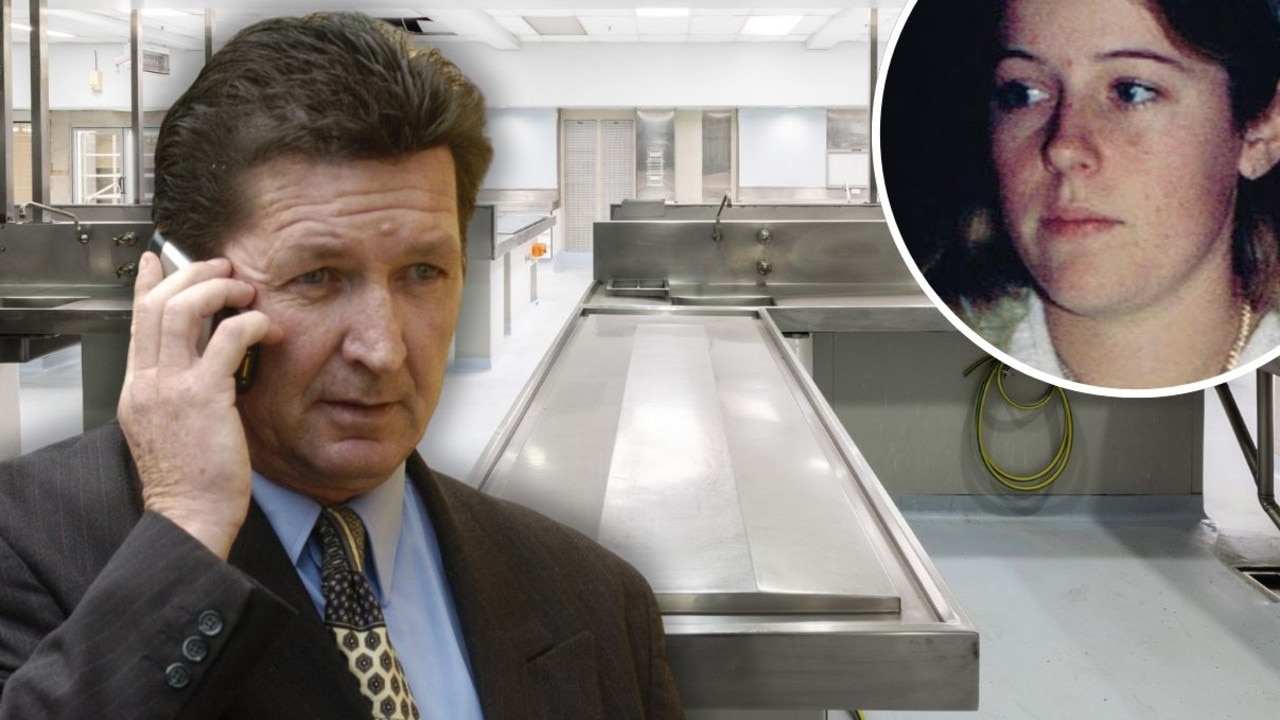Riverland high school massacre threat duo’s frightening arsenal of weapons revealed in new court photos
Their lawyers insist they were just “fantasising” about high school massacres – now the shocking arsenal of homemade weapons and armour amassed by two South Australian teens can be revealed.

True Crime
Don't miss out on the headlines from True Crime. Followed categories will be added to My News.
- Police allege teens went from massacre plot to action in four days
- Teens charged over massacre ‘plot’ plead guilty to lesser charge
- Teens’ massacre threat ‘was just venting at bullies’, court told
There were more than a dozen knives – each one handcrafted from tools and other ordinary metal implements – on the walls when police entered the Riverland teenager’s shed.
Many hung from dedicated spots on pegboards surrounding the angle grinder and forge used to craft them.
One was much longer than the others – once a steel ruler, it was now more a machete or homemade sword – while another was unique.
It appeared to have once been a piece of metal tubing that was flattened to have a knifelike handle, but ended in a metal loop or noose.
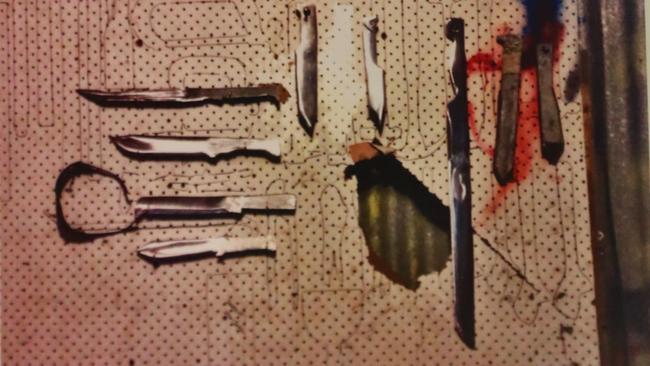
Police also found a discarded shopping trolley that had been cut up, with two-thirds of its metal “netting” separated from its frame.
They soon located the missing part – it had been refashioned to fit around a human torso as crude body armour, secured by elasticised straps.
Worryingly, a piece of thick steel had been welded over the top of the netting, protecting the very centre of the wearer’s mass.

Coupled with witness statements and the homemade napalm also in the shed, SA Police believed they had stopped a plot to commit a high school massacre.
Last month, however, defence lawyers asserted – and prosecutors accepted – the teenager who built the frightening arsenal had nursed no more than revenge “fantasies”.
On Wednesday, the Supreme Court released photos of the weapon created by the boy, now 18 years old.
He and his co-offender, now 20, were charged with conspiracy to commit murder – and faced maximum life sentences – for their actions in October and November 2017.
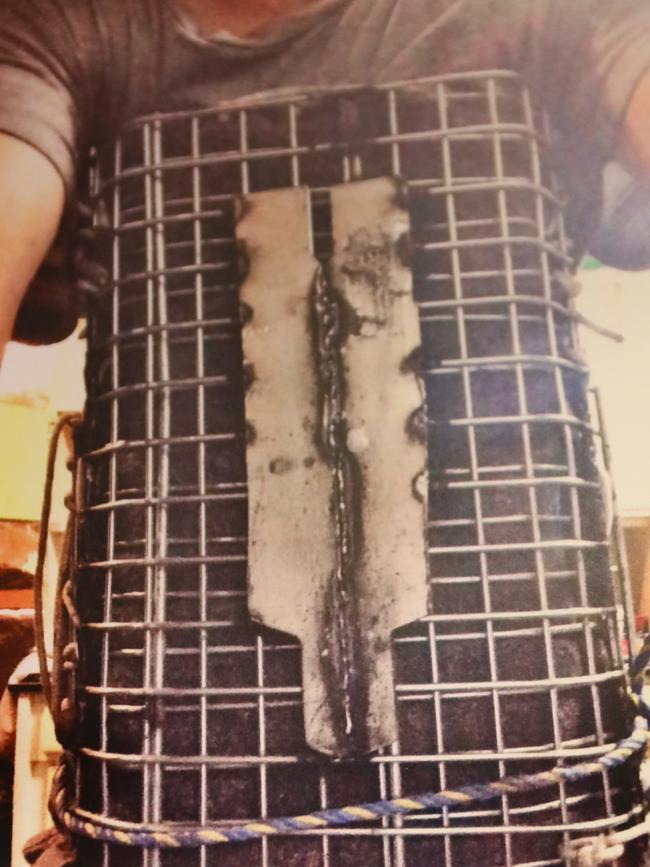
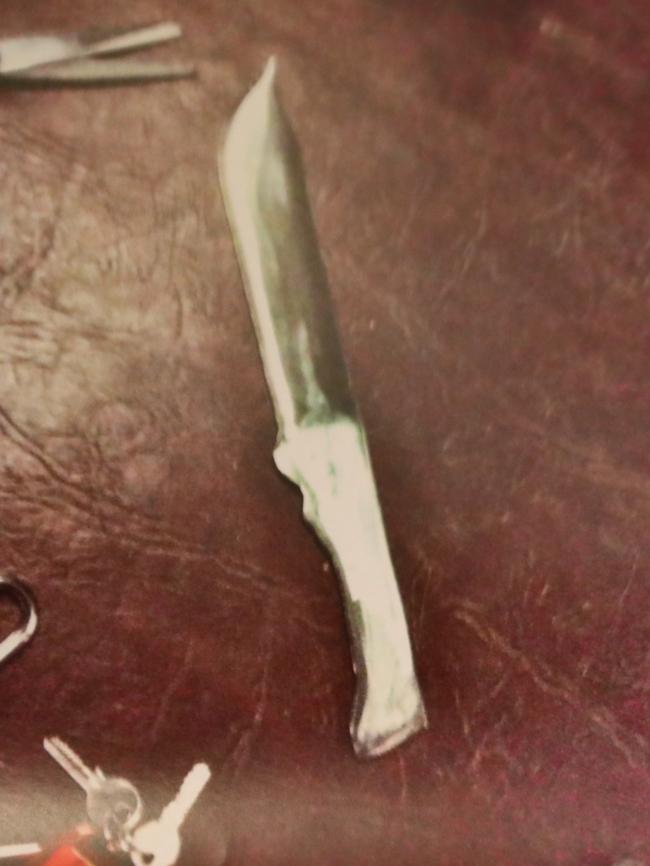
Police alleged the duo intended to use homemade explosives and napalm to block a school’s exits, then use firearms and hand-to-hand weapons to commit mass murder.
However they sought, and successfully struck, a plea bargain deal with prosecutors that saw the charges downgraded, and the maximum sentence reduced to 12 years.
Last month, Stephen Millsteed, for the 18-year old, told the court his client was “disillusioned” with the world but posed no threat to it.
He said his client was a businessman, not a would-be killer, who “always wanted to be a blacksmith” and made Ned Kelly helmets to sell online.
“There’s an abundance of evidence that my client had been making knives, armour and so on as a hobby since he was about 14 or 15,” he said.
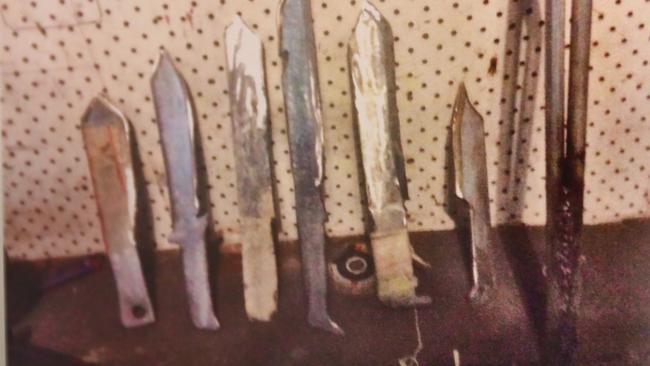

“It started when his grandfather gave him an angle grinder as a reward for cleaning.
“There was nothing furtive about his behaviour … it was well-known he was engaged in this hobby, he even gave a knife he’d made to the father of one of his girlfriends.”
He said the weapons were in no way connected to the 20-year-old’s obsession with school shootings, which he had expressed in his personal diaries for several years.
“The armour was a very crude piece of hardware … he and his friends would wear it while they were having play fights,” he said.

“One of his friends said ‘he has always wanted to be a blacksmith’, and that they ‘would have sword fights, he would make knives, he would make blowpipes that fired needles’.”
Mr Millsteed said the napalm should not trouble the court.
“He used various materials to maintain the heat in the shed needed to forge (steel) until he discovered how to make napalm,” he said.
“He found napalm was ideal for forging steel because of the intense heat that it generated and because it would, for a long period of time, remain flammable.
“It was in that context he was making napalm – not for the purpose of causing harm to anyone.”
The 18-year-old and 20-year-old will be sentenced in three weeks.


